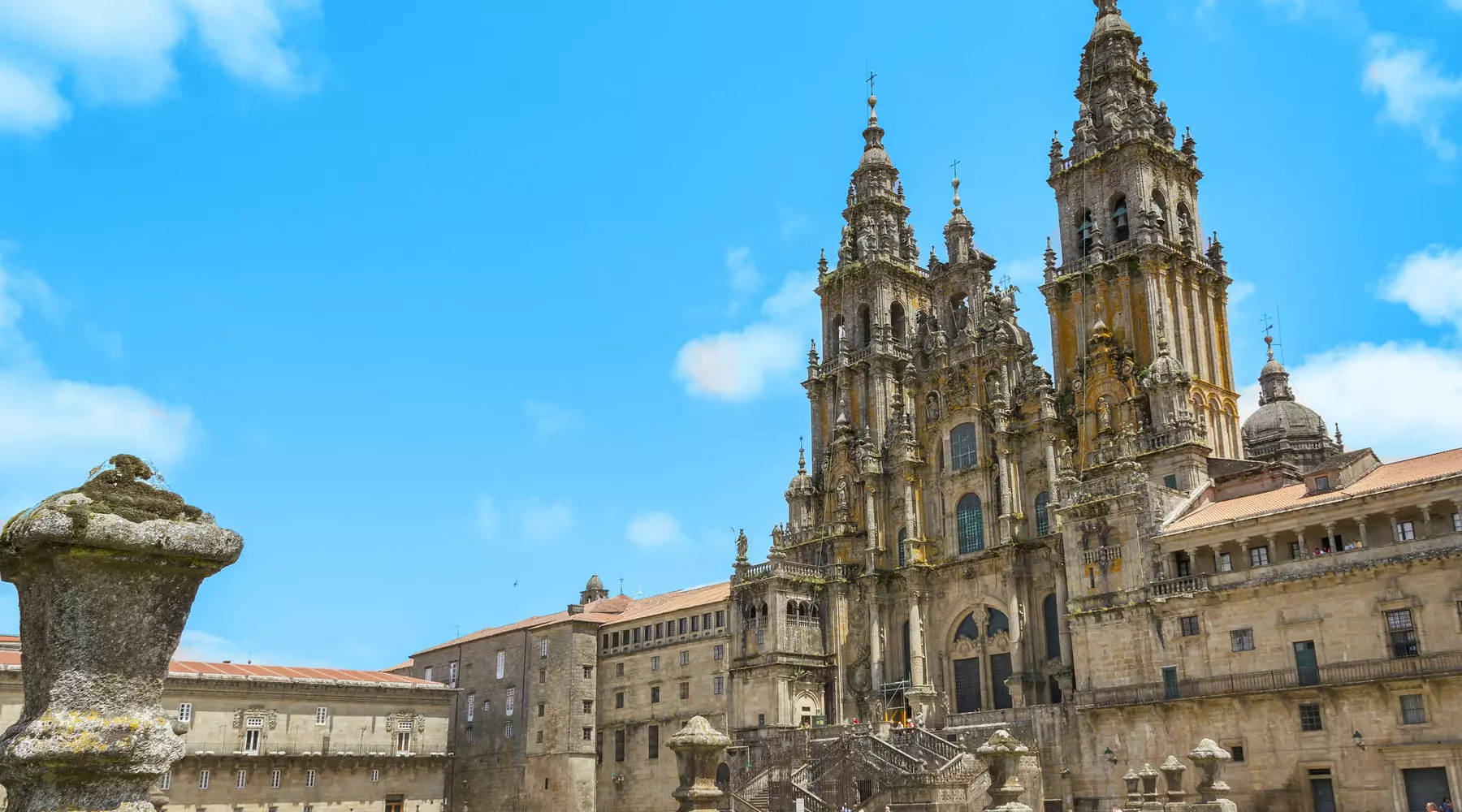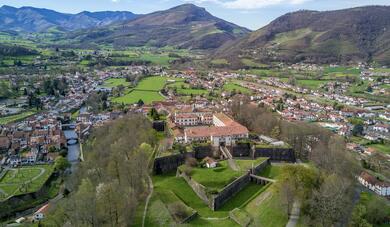
From Saint Jean Pied de Port to Logroño
The Way of Saint James: The Camino Frances from St. Jean Pied de Port to Logroño.
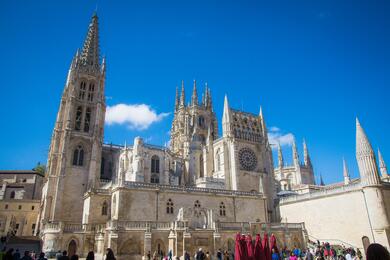
From Burgos to León.
The Way of Saint James: The Camino Frances from Burgos to León.
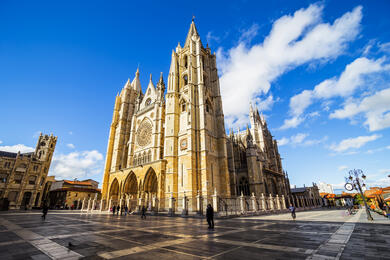
From León to Santiago de Compostela.
The Way of Saint James: The Camino Frances fom León to Santiago de Compostela.
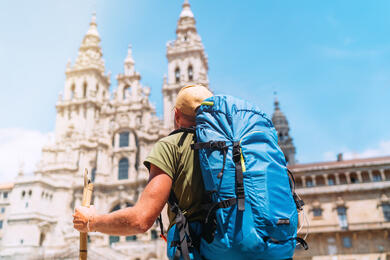
From Santiago to Fisterra.
The Way of Saint James: The Camino Frances from Santiago to Fisterra.
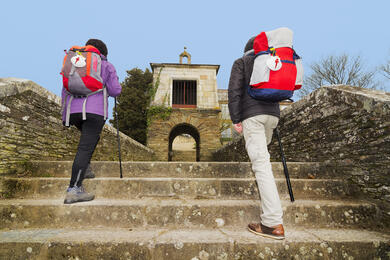
From Sarria to Santiago.
The Way of Saint James : The Camino Frances from Sarria to Santiago.
Camino Frances: a short Guide for Your Pilgrimage Upon the Spanish Saint James Way
The Camino Frances, also known as the French Way, is the most popular route of the Camino de Santiago, stretching over 800km across northern Spain. This historic route offers pilgrims a meaningful journey to the Cathedral of Santiago de Compostela, with each stage providing opportunities for reflection and discovery. Each day on the Camino de Santiago is an experience of breathtaking views, historic sites and spiritual growth.
Saint Jean Pied de Port: the starting point of your journey on the Camino Frances
The Camino Frances begins in the charming town of Saint Jean Pied de Port, nestled in the Pyrenees. From here, the first stage of the Pilgrim's Way is to walk from Saint Jean to Roncesvalles, crossing into Spain. This transition marks a key milestone on the route, where the Camino Frances links up with other European routes at Puente la Reina. As you walk this iconic route, you'll come across welcoming places and towns that offer rest and reflection for every pilgrim.
Key stages and places on the Camino Frances
As you walk, the Camino Frances takes you through places rich in history and culture. Some of the places to visit along the way include :
Saint Jean Pied de Port: a town lost in the middle of the Pyrenees offering an exceptional view of the mountain range
Pamplona: A lively city famous for the San Fermín festival and its vibrant streets, Pamplona is an essential stop for pilgrims on the Camino.
Logroño: Located in the heart of La Rioja, Logroño is a town where pilgrims can enjoy fine wines, the historic church, and local cuisine.
Burgos: Home to the stunning Burgos Cathedral, a UNESCO World Heritage site, Burgos is one of the most important places on the Camino Frances.
León: This city offers a blend of history and culture, with the Gothic León Cathedral and a thriving pilgrim community.
Sarria: The most popular starting point for the final 100 km of the Camino Frances, Sarria is crucial for earning the Compostela.
Ponferrada: Known for its Templar castle, Ponferrada is an essential place for pilgrims seeking history and views.
Santiago de Compostela: The ultimate destination, home to the Cathedral of Saint James, where the Camino Frances journey culminates in spiritual fulfillment.
Regions and Landscapes of the Camino Frances
The Camino de Santiago passes through several different regions of Spain, offering pilgrims breathtaking landscapes and unforgettable views:
Navarre: Known for its lush trails and rich history, Navarre welcomes pilgrims with open arms.
La Rioja: Famous for its rolling vineyards and picturesque landscapes, La Rioja offers a blend of culture and natural beauty.
Castile and Leon: Home to important cities such as Burgos, León and Ponferrada, this region offers both cultural landmarks and vast, arid plains.
Galicia: The final stretch of the Pilgrim's Way, Galicia is characterised by green hills, mystical forests and the approach to Santiago de Compostela.
Practical Tips for Pilgrims
Accommodation: There is no shortage of accommodation on the Pilgrim's Way to Santiago, you can stay in an albergue or a hotel. We recommend that you book as early as possible in towns such as Sarria, Burgos, León and Santiago de Compostela to ensure availability, especially during the high season. You'll find both budget and more luxurious options to suit your needs.
The stages: Although shorter than the Camino del Norte, the Camino Frances is also divided into manageable stages, ranging from 20 to 30 kilometres per day. You can adapt your walking pace to your own preferences and stamina. The route allows for both long and short stages, offering flexibility to all pilgrims.
Time: The Camino de Santiago usually takes 30-35 days to complete, but you can also walk sections of the route, such as the last 100km from Sarria, which takes 5-7 days. Take your time and enjoy the wonders that mark each step of the way.
Guidebooks: A good guidebook is essential for planning your trip, identifying key places and understanding the history of the route. It's also useful for tips on accommodation, food and walking distances.
Why Choose the Camino Frances ?
Although there are many routes such as the Camino del Norte or the Portuguese Camino, the Camino Frances remains the most travelled route of the Camino de Santiago, and for good reason. With plenty of accommodation, a variety of places to visit and a deep-rooted pilgrimage tradition, there is something for everyone. From the town of Saint Jean Pied de Port to the historic town of Sarria, with breathtaking stages such as the vibrant city of Pamplona, each stage of the Camino de Santiago offers unforgettable experiences, breathtaking views and spiritual growth.
Whether you walk the whole route or just part of it, the Camino Frances is a life-changing journey. Book your stay today and start your pilgrimage on the Camino Frances. Each day will bring new discoveries and the journey will culminate in the magnificent Cathedral of Santiago de Compostela.
